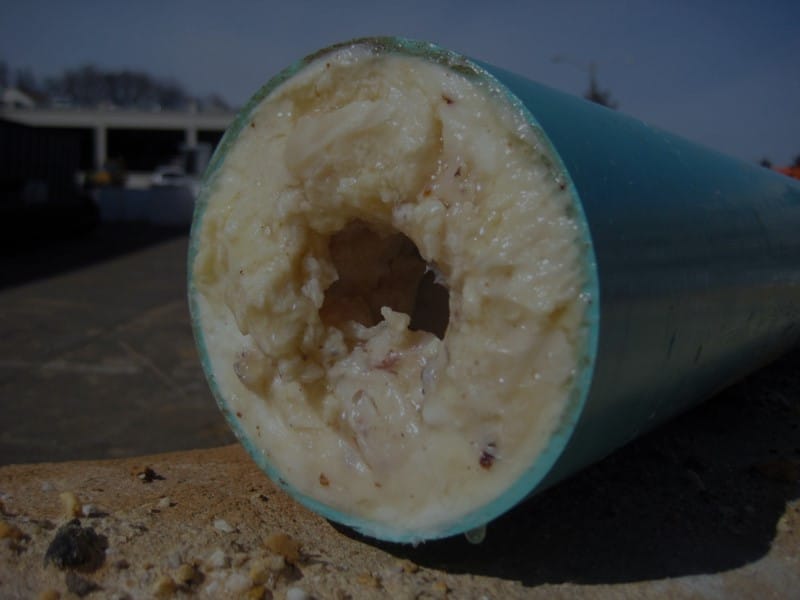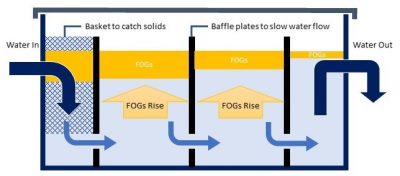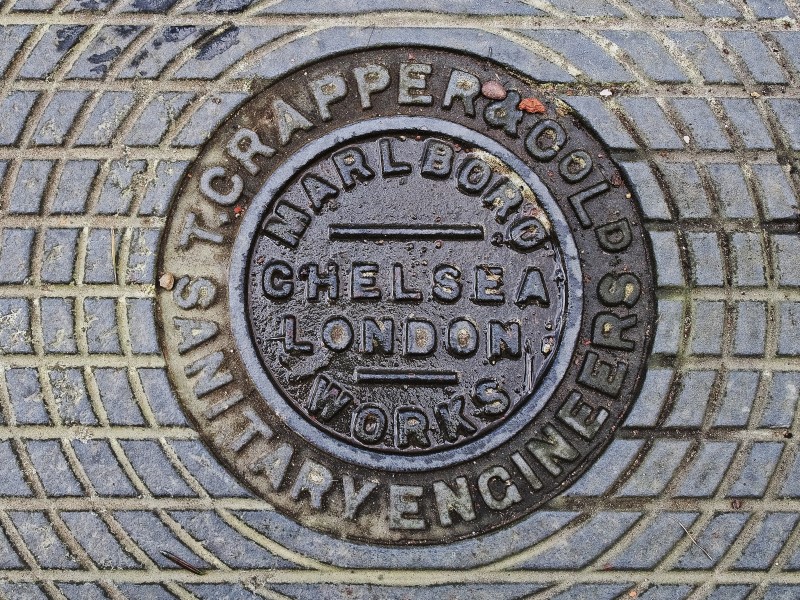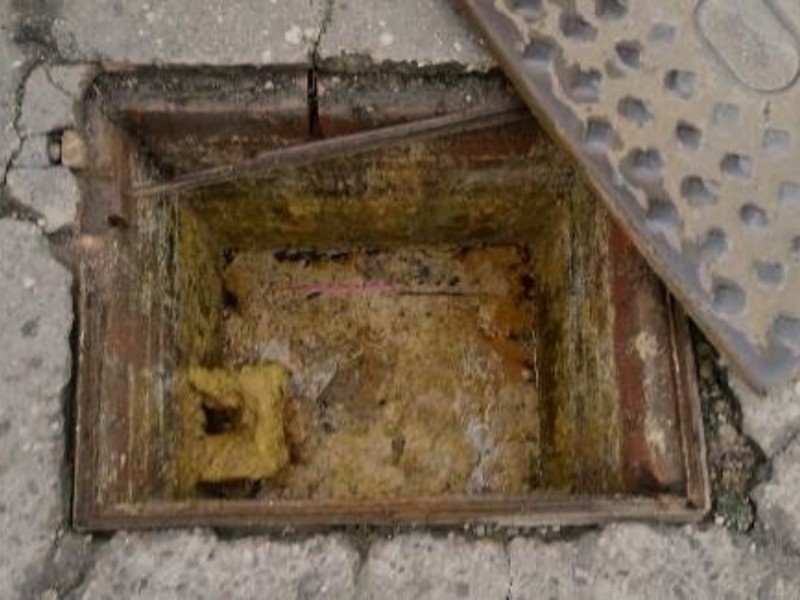Dealing With Fats, Oils and Greases (FOGs)
Food businesses produce FOGs and are responsible for dealing with them before they get to the sewer.
The problem is most people don’t understand how grease traps work, how to maintain them or what size they legally need to be.
What this means is most greasetraps are undersized, aren’t maintained properly and can’t cope with the effluent going through them.
The result?
Build up of FOGs in drainage systems causing blockages and foul odours, and further down the line fatbergs in sewers. First, let’s understand the types of system out there.

There are two basic types of drainage systems: those with a grease trap (interceptor) and those without a greasetrap; either can also include a wet well prior to pumping to the main sewer.
So, dealing with effluent is replete with issues both operational and legal. Even with a well-managed system there is still the issue of malodours and the potential for blockage as well as the day-to-day expense of emptying and licenced waste costs.
Help is at hand…
A Bio Drain Management System automatically doses a naturally occurring microbe blend that releases enzymes to break down the FOGs that cause multiple issues in drainage systems. The microbes form a biofilm on the walls of the drainage system which continuously releases enzymes, forming an effective barrier to solid grease deposits.
What’s the Cost?
A Bio Drain Management System can cost as little as 2p per meal. But you need to consider your current cost base too. Consider the following:
Where’s the Catch?
A Bio Drain Management System can’t solve everything. If you’ve got collapsed drains or other problems that need a civil engineering fix the friendly bugs can’t solve that. They’re brilliant at dealing with FOGs, odours and keeping the drains running free – but they’re not brickies or plumbers and they can’t deal with toothpicks, cocktail sticks, wet wipes, sanitary towels, your ex’s favourite jumper or your broken dreams. Sorry.
But they will keep waste pipes, drains and grease traps as slick as a buttered dolphin. Contact us for a free, no obligation survey.
Are you compliant? If you’re discharging FOGs to the sewer you are liable to fines and prosecution. Contact us for a free, no obligation survey to see where you stand. You can read more about FOG management here or search our FAQs.


 Many establishments use grease traps. These are can be anything from a plastic or metal box under the sink to prefabricated pits of varying size and construction. All depend on the basic principle of oil floating on water. Effluent enters the trap where a dip pipe or baffle plates slow the flow so the FOGs rise allowing relatively clean water to be discharged.
Many establishments use grease traps. These are can be anything from a plastic or metal box under the sink to prefabricated pits of varying size and construction. All depend on the basic principle of oil floating on water. Effluent enters the trap where a dip pipe or baffle plates slow the flow so the FOGs rise allowing relatively clean water to be discharged. 

